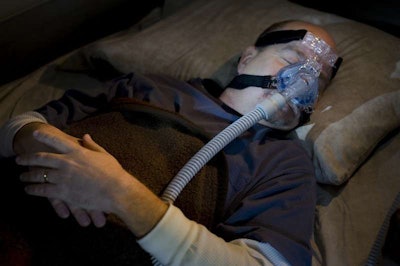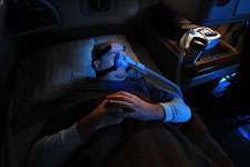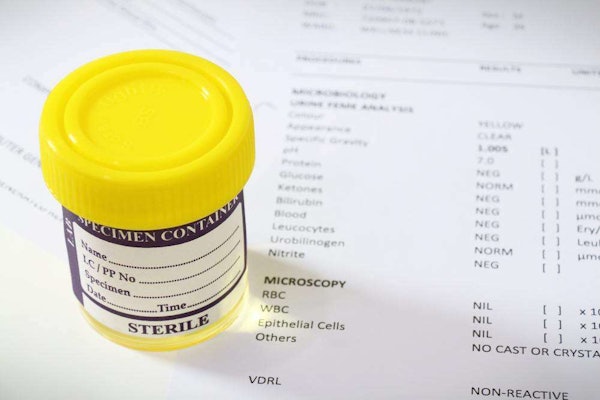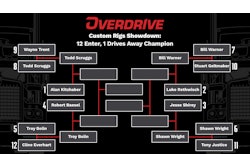The Trucking Law segment is a monthly feature on Overdrive, in which we pose commonly asked questions from truckers and owner-operators to legal experts. In this installment, attorney Alex Underwood answers common questions about sleep apnea screening and treatment. Find all Trucking Law installments via this link.
 Regulations allow for transitional periods that include short-term medical cards as a driver adjusts to using a CPAP machine.
Regulations allow for transitional periods that include short-term medical cards as a driver adjusts to using a CPAP machine.There are many types of sleep apnea, but obstructive sleep apnea (OSA) is far and away the most common, especially among commercial drivers. OSA occurs when the muscles relax and block the airway during sleep.
Your doctor will order a sleep study if he suspects you suffer from sleep apnea. The most common OSA treatment is use of a continuous positive airway pressure (CPAP) machine and mask.
During your U.S. Department of Transportation medical examination, the certified medical examiner (ME) might require you to undergo a sleep study before granting you a long-term medical certificate. Certain conditions can lead to this determination, such as a body mass index (BMI) over 40 or a slightly lower BMI but with other problems such as diabetes, hypertension or a very large neck.
 Dr. Alexander E. Underwood works at KT Health Clinic, a mile from I-44’s Exit 80 near Springfield, Missouri. He can be reached at 417-832-8678 or [email protected].
Dr. Alexander E. Underwood works at KT Health Clinic, a mile from I-44’s Exit 80 near Springfield, Missouri. He can be reached at 417-832-8678 or [email protected].If you have some of these issues and a previous sleep study shows you do not have sleep apnea, you will not be required to get another study. Otherwise, the ME will issue a short-term medical card with enough time to get a sleep study done, usually 30 days to six months.

If you test negative for sleep apnea, you’re ready to roll. If you test positive, you will be prescribed treatment, likely a CPAP. You will be required to document your CPAP use for at least 30 days. During that time, you must use the CPAP for at least 70% of nights for at least four hours. Satisfying these requirements, you will be granted up to a yearlong medical certification.
If you return to the ME with documented use below that threshold, you’ll be issued an initial 30-day certificate to show compliance. If that’s successful, it will be followed by a 60- or 90-day compliance period and ultimately back to full-year certificates.
No one wants to adopt the CPAP regimen. It looks uncomfortable, and it can be at first. However, with many types of machines and masks to choose from, you should be able to find one that works for you.
Many drivers think they can shop doctors until they find someone who won’t enforce an OSA diagnosis. Don’t go to the trouble. You can put it off for only so long, and countless drivers and others who routinely use CPAP testify how much their sleep and health have improved.
If you are prescribed a CPAP, use it. I have seen far too many patients suffer and die from disease complicated by OSA.
Apnea’s indicators
The most common symptom of obstructive sleep apnea is loud snoring. Others include:
- Excessive daytime sleepiness
- Abrupt awakenings, accompanied by gasping or choking
- Morning headaches
- Dry mouth
- High blood pressure












